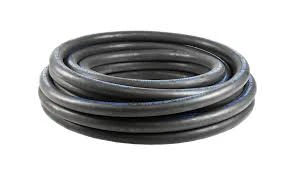Chevrolet Power Steering Hose Replacement Guide and Tips for Maintenance
Understanding Chevy Power Steering Hose Importance, Symptoms of Problems, and Replacement Guide
The power steering system is an essential component of your Chevrolet vehicle, facilitating easier steering, especially at low speeds. Among the critical components of this system is the power steering hose. This article will explore the significance of the Chevy power steering hose, common issues that can arise, and how to replace it when needed.
The Importance of Power Steering Hose
The power steering hose serves as the conduit for hydraulic fluid between the power steering pump and the steering gear. In a Chevy, this fluid helps to augment the force you apply to the steering wheel, making it easier to turn. When functioning correctly, the power steering system allows for smooth and responsive handling, contributing to a safer driving experience.
However, like any other part of the vehicle, the power steering hose can wear out due to age, pressure, or exposure to environmental elements. Thus, knowing its importance and ensuring its proper function are vital for maintaining your Chevy's performance.
Symptoms of Power Steering Hose Problems
1. Fluid Leaks One of the most apparent signs of a failing power steering hose is fluid leakage. If you notice a reddish or brown fluid pooling under your vehicle, it could indicate a leak from the power steering system.
2. Difficulty Steering If you find it increasingly difficult to turn the steering wheel, particularly at low speeds, it may point to a loss of hydraulic pressure caused by a compromised hose.
3. Noisy Steering A whining or grinding noise when turning the steering wheel can imply that air or low fluid levels are present in the power steering system, often caused by a leak in the hose.
4. Burning Smell If the power steering fluid leaks onto hot engine components, it may emit a burning odor, signaling critical problems within the system.
5. Low Fluid Levels Regular checks of your power steering fluid can indicate issues. If you frequently need to top up the fluid, there might be a leak in the hose that requires attention.
chevy power steering hose

Replacement of the Power Steering Hose
If you suspect an issue with your Chevy's power steering hose, it’s crucial to address it promptly. Here’s a brief guide on how to replace it
1. Gather Necessary Tools You’ll need a new power steering hose, wrench set, fluid siphon, power steering fluid, and possibly a jack and jack stands for better access.
2. Raise the Vehicle If necessary, raise the front of your vehicle using a jack and secure it with jack stands to access the power steering components more easily.
3. Locate the Hose Identify the high-pressure and low-pressure hoses connected to the power steering pump and steering gear.
4. Drain Power Steering Fluid Use a siphon to remove the fluid from the reservoir to prevent leaks and spills during the replacement.
5. Disconnect the Old Hose Carefully remove the old hose by loosening the fittings with a wrench. Be prepared for any residual fluid to spill out.
6. Install the New Hose Attach the new hose securely, ensuring all fittings are tight to avoid future leaks.
7. Refill Power Steering Fluid Fill the power steering reservoir with the appropriate type of fluid and check for any signs of leaks.
8. Test Drive Finally, take your vehicle for a test drive to ensure that the steering is smooth and responsive.
In conclusion, maintaining your Chevy's power steering hose is vital for ensuring optimal steering performance. By being aware of the symptoms of hose problems and knowing how to replace it, you can keep your vehicle running smoothly and safely. Regular checks and maintenance can save you from costly repairs in the long run, allowing you to enjoy your driving experience.
-
Ultimate Spiral Protection for Hoses & CablesNewsJun.26,2025
-
The Ultimate Quick-Connect Solutions for Every NeedNewsJun.26,2025
-
SAE J1401 Brake Hose: Reliable Choice for Safe BrakingNewsJun.26,2025
-
Reliable J2064 A/C Hoses for Real-World Cooling NeedsNewsJun.26,2025
-
Heavy-Duty Sewer Jetting Hoses Built to LastNewsJun.26,2025
-
Fix Power Steering Tube Leaks Fast – Durable & Affordable SolutionNewsJun.26,2025

